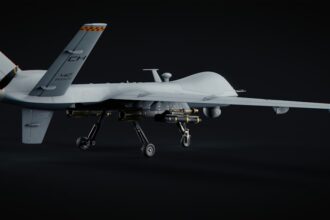Throughout history, the evolution of weaponry has been closely tied to the socio-economic conditions of societies. Affordable weapons have played a pivotal role in shaping conflicts, empowering the underprivileged, and altering the balance of power. From ancient times to the modern era, the accessibility of weaponry has often determined the outcomes of battles and revolutions.
The significance of these weapons lies not only in their cost-effectiveness but also in their ability to democratize violence, allowing individuals and groups with limited resources to defend themselves or assert their influence. The concept of affordability in weaponry transcends mere price; it encompasses the ease of production, availability of materials, and the skill required for their use. As societies evolved, so did their methods of warfare, leading to innovations that made weapons more accessible to a broader range of people.
This article will explore various affordable weapons throughout history, examining their impact on warfare and society at large.
Key Takeaways
- Affordable weapons have played a significant role throughout history, shaping the outcomes of wars and battles.
- The sling, a simple and inexpensive weapon, has been used effectively for centuries, demonstrating the power of low-cost warfare.
- The longbow revolutionized medieval warfare, providing a cost-effective and deadly weapon for English armies.
- The Roman gladius was a cost-effective weapon that played a crucial role in the conquest and expansion of the Roman Empire.
- The matchlock musket and subsequent firearms made warfare more accessible to the masses, changing the dynamics of battle in the Renaissance and beyond.
The Sling: A Simple and Effective Weapon
One of the earliest examples of an affordable weapon is the sling, a simple yet effective tool that has been used since ancient times. Comprising a length of cord with a pouch at its center, the sling allowed users to hurl stones or other projectiles with remarkable force and accuracy. Its design was straightforward, making it easy for individuals to craft their own slings from readily available materials.
This accessibility meant that even those without formal training could become proficient in its use, leveling the playing field in conflicts. The sling’s effectiveness is well-documented in historical accounts, most famously in the biblical story of David and Goliath. This narrative illustrates how a seemingly underdog figure could triumph over a heavily armed opponent through skill and ingenuity.
The sling was not merely a weapon of choice for shepherds; it became a staple in the arsenals of various armies throughout history. Its low cost and ease of use allowed it to be employed by both elite warriors and common soldiers alike, making it a significant tool in ancient warfare.
The Longbow: A Game-Changer in Medieval Warfare

The longbow emerged as a revolutionary weapon during the medieval period, particularly in England. Crafted from yew or other flexible woods, this powerful bow could shoot arrows over long distances with remarkable accuracy. The longbow’s design required minimal resources compared to other contemporary weapons, such as crossbows or siege engines, making it an affordable option for many archers.
Its introduction into warfare transformed military tactics and strategies, allowing armies to engage enemies from afar. The Battle of Agincourt in 1415 serves as a prime example of the longbow’s impact on warfare. English archers, equipped with longbows, decimated French forces despite being outnumbered.
The ability to unleash volleys of arrows upon advancing troops not only caused significant casualties but also instilled fear among opponents. The longbow’s affordability and effectiveness contributed to its widespread adoption across Europe, solidifying its place as a game-changer in medieval combat.
The Roman Gladius: A Cost-Effective Weapon for Conquest
| Metric | Value |
|---|---|
| Length of Gladius | 60-85 cm |
| Weight of Gladius | 0.7-1 kg |
| Material | Iron or Steel |
| Primary Use | Close combat |
| Effectiveness | Highly effective in thrusting and slashing |
The Roman gladius stands as a testament to the effectiveness of affordable weaponry in military conquest. This short sword, typically measuring around two feet in length, was designed for close combat and was easy to produce. Crafted from iron or steel, the gladius was not only cost-effective but also highly efficient in the hands of Roman soldiers known as legionaries.
Its design allowed for quick thrusts and slashes, making it ideal for the organized formations that characterized Roman military tactics. The gladius played a crucial role in Rome’s expansion across Europe and beyond. Its affordability meant that Roman legions could be equipped en masse, allowing for a formidable fighting force that could conquer vast territories.
The success of the Roman Empire can be attributed in part to the widespread use of the gladius, which enabled soldiers to engage effectively in battle while maintaining logistical efficiency. This weapon exemplified how affordability could translate into military dominance.
The Matchlock Musket: Revolutionizing Warfare in the Renaissance
As technology advanced during the Renaissance, the matchlock musket emerged as a revolutionary firearm that changed the landscape of warfare. This weapon combined gunpowder with a firing mechanism that utilized a slow-burning match to ignite the powder charge. While muskets were initially expensive due to their intricate construction, advancements in manufacturing techniques eventually made them more accessible to various armies.
The matchlock musket’s introduction marked a significant shift from traditional melee weapons to firearms on the battlefield. Its ability to deliver lethal firepower from a distance altered tactics and strategies, rendering heavily armored knights less effective against infantry armed with muskets. The affordability of matchlock muskets allowed nations to equip larger armies with firearms, leading to more democratic forms of warfare where common soldiers could wield significant firepower.
The Colt Revolver: Making Firearms Accessible to the Masses

In the 19th century, Samuel Colt revolutionized personal firearms with his invention of the Colt revolver. This innovative design featured a rotating cylinder that allowed multiple shots to be fired without reloading after each shot. Colt’s manufacturing techniques made it possible to produce revolvers at a lower cost than previous firearms, making them accessible to civilians and law enforcement alike.
The Colt revolver quickly gained popularity due to its reliability and ease of use. It became synonymous with the American West and was embraced by both lawmen and outlaws alike. The affordability of this firearm democratized access to personal protection and self-defense, empowering individuals who previously had limited means to acquire effective weaponry.
The Colt revolver’s impact on American culture and society cannot be overstated; it symbolized freedom and individualism while also contributing to an era marked by violence and lawlessness.
The AK-47: A Pioneering Assault Rifle for the Modern Era
The AK-47, designed by Mikhail Kalashnikov in the aftermath of World War II, represents one of the most iconic and affordable firearms in modern history. Its design prioritized simplicity and reliability, allowing it to be mass-produced at a low cost. The AK-47 quickly became a symbol of revolutionary movements around the world due to its accessibility and effectiveness in combat situations.
The widespread adoption of the AK-47 by various military forces and insurgent groups can be attributed to its affordability and ease of use. It is capable of firing both semi-automatic and automatic rounds, making it versatile for different combat scenarios. The rifle’s durability in harsh conditions further solidified its reputation as a reliable weapon for guerrilla warfare.
As conflicts erupted across Asia, Africa, and Latin America during the latter half of the 20th century, the AK-47 became synonymous with resistance movements seeking liberation from colonial or oppressive regimes.
Improvised Explosive Devices (IEDs): Low-Cost and Lethal Weapons
In contemporary warfare, improvised explosive devices (IEDs) have emerged as one of the most cost-effective yet lethal weapons used by insurgents and non-state actors. Constructed from readily available materials such as household items or military ordnance, IEDs can be deployed with minimal resources while causing significant destruction.
IEDs have been particularly prevalent in asymmetric warfare scenarios where conventional military forces face off against irregular combatants. Their ability to inflict casualties on enemy troops while instilling fear among civilians has made them a favored tactic among insurgents. The low cost associated with IED production allows groups with limited funding to level the playing field against more technologically advanced adversaries, demonstrating how affordability can shape modern conflict dynamics.
The RPG-7: A Cost-Effective Anti-Tank Weapon
The RPG-7 is another example of an affordable weapon that has had a profound impact on modern warfare. Developed by the Soviet Union in the 1960s, this portable anti-tank rocket launcher is known for its simplicity and effectiveness against armored vehicles. Its design allows for easy operation by individuals with minimal training, making it accessible to various armed groups around the world.
The RPG-7’s affordability has led to its widespread proliferation among both state militaries and non-state actors alike. Its ability to penetrate armor makes it a formidable threat on the battlefield, particularly in urban warfare scenarios where armored vehicles are often deployed. The RPG-7 exemplifies how low-cost weaponry can shift power dynamics in conflicts, enabling smaller factions to challenge larger military forces effectively.
The Machete: A Versatile and Inexpensive Tool of War
The machete is perhaps one of the most versatile yet overlooked weapons throughout history. While primarily known as an agricultural tool used for cutting through dense vegetation, it has also served as an effective weapon in various conflicts around the world. Its low cost and ease of production make it accessible to individuals across different socio-economic backgrounds.
In many regions, particularly in developing countries, machetes have been used not only for farming but also for self-defense and combat during civil unrest or revolutions. Their effectiveness lies in their simplicity; they can be wielded with lethal force by individuals who may lack formal training in weaponry. The machete’s dual purpose as both a tool and a weapon underscores its significance as an affordable means of survival and resistance.
The Enduring Legacy of Affordable Weapons in History
The legacy of affordable weapons throughout history is one marked by their profound impact on warfare and society at large. From ancient slings to modern firearms like the AK-47, these weapons have shaped conflicts by empowering individuals and groups who might otherwise lack access to effective means of defense or aggression. Their affordability has often determined who can participate in warfare, influencing power dynamics across cultures and eras.
As societies continue to evolve, so too will the nature of affordable weaponry. The enduring legacy of these weapons serves as a reminder that access to arms can empower marginalized groups while also posing significant challenges for peace and stability. Understanding this complex relationship between affordability and weaponry is crucial for addressing contemporary issues related to conflict and security on a global scale.
A related article that delves into similar themes can be found on the website “In The War Room.” This article provides insights into how various military strategies have evolved over time, often driven by the need to maximize efficiency and effectiveness with limited resources. For more in-depth analysis and historical examples, you can read the full article by visiting In The War Room. This resource offers a comprehensive look at how economic constraints have historically influenced weapon development and military tactics.
FAQs
What are some of the cheapest weapons in history?
Some of the cheapest weapons in history include the sling, the bow and arrow, the spear, the club, and the throwing stick. These weapons were made from readily available materials and required minimal resources to produce.
How were these weapons used in history?
These weapons were used by ancient civilizations for hunting, self-defense, and warfare. They were effective in taking down prey and in combat situations, and were often the primary weapons of choice for early humans and ancient warriors.
What made these weapons cost-effective?
These weapons were cost-effective because they were made from simple materials such as wood, stone, and animal parts. They did not require advanced technology or complex manufacturing processes, making them accessible to a wide range of people.
Did these weapons have any significant impact in history?
Yes, these weapons had a significant impact in history. They played a crucial role in early human survival, hunting, and warfare. They also shaped the development of military tactics and strategies, and their use persisted for thousands of years.
Are these weapons still used today?
While these weapons are not commonly used in modern warfare, they are still utilized in some traditional and ceremonial contexts. Additionally, there are enthusiasts and hobbyists who continue to practice and use these ancient weapons for recreational purposes.




